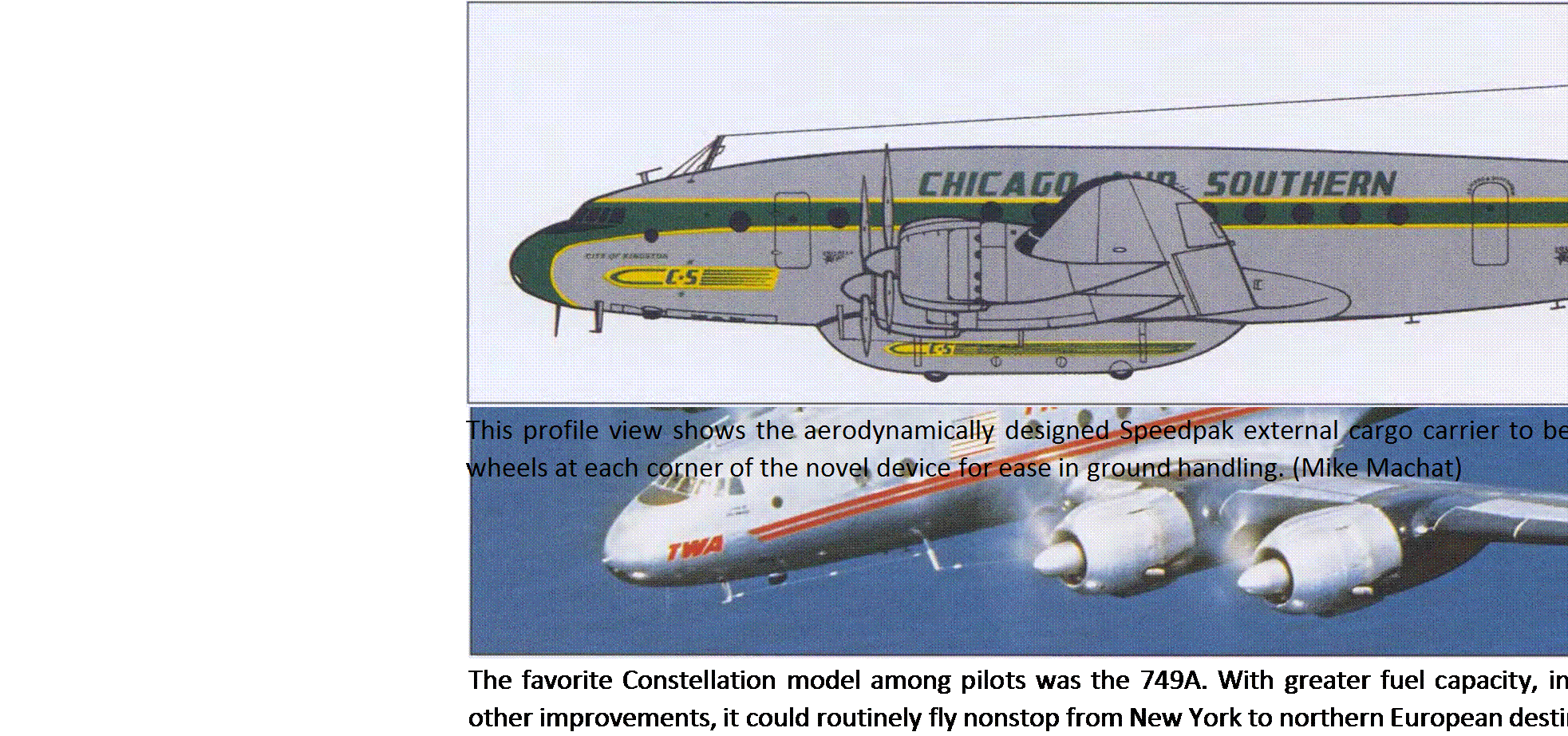Douglas DC-6
Beginning in 1944, designers at Douglas Aircraft in Santa Monica were working toward a stretched and pressurized improvement of their then-current DC-4/C-54. The key to this stretch was the Pratt & Whitney R-2800 Double Wasp engine. As we saw above with the Constellation, and indeed as would be seen for the decades following this time period, engine advancement and the proper mating with the appropriate airframe would literally make or break an aeronautical design.
The DC-6 (later known as “the straight-6”) incorporated many firsts for an airliner, and learned lessons from the first Constellations, thus refining the air travel “product” even further. For instance, the DC-6 had the first cabin heated by radiant heat in the cabin walls and floor; no-fog passenger windows; electric de-icing of
 |
the wings, tail, and propellers; it was the first airliner to be air conditioned both in the air and on the ground; and it featured a cabin, which was pressurized automatically depending on altitude. The DC-6 boasted that a selected cabin temperature could be maintained within 3 degrees Fahrenheit because of the advanced heat – ing/air conditioning in the airplane.
One competitive aspect of the DC-6/Constellation duel was each airplane’s fuselage design. Lockheed created a beautiful and aerodynamically inspired curvaceous body for its airliner, and claimed lower drag and higher speeds (with a slight addition in lift). Douglas continued with its utilitarian approach to cabin design, and because it chose a cylindrical “tube” for its airplane, realized far more capability in terms of space and its utilization. It could also be argued that a constant-section cylinder is easier to adapt to a stretch and, therefore, easier to expand upon to grow the airframe (which we will indeed witness later). It is subjective, of course; we believe the early cabin interiors of the Douglas airplane had a more luxurious feel to them versus the Constellation, due to the use of a constant-diameter fuselage and cabin.
The DC-6 began life much like the 049: as a transport for the military services. The assigned number for the design was YC-112A. It flew for the first time on February 15, 1946 (a year after the Constellation entered airline service), and began flying in commercial service for American Airlines on April 27, 1947. This was also the day when United Airlines inaugurated its own DC-6 service. American had ordered 50 of the airplanes, United 35. American’s aircraft had accommodations for sleeper berths and the telltale small berth windows at the top of the fuselage. American’s configuration was fifty passengers by day, or 24 by night using the berths.
As noted, the previous competitive edge enjoyed by TWA and its Constellations had, by September 1947, been replaced by the tripartite division of traffic across the United States that was pretty much in place prior to the war. The breakdown was as follows: American Airlines, 47 percent; TWA, 37 percent; and United Airlines, 16 percent.
A total of 175 DC-6s were built by Douglas before production ended in 1951.











